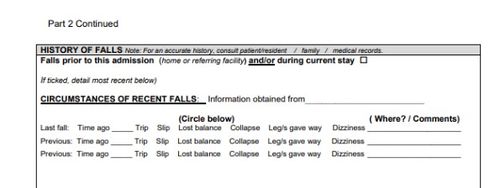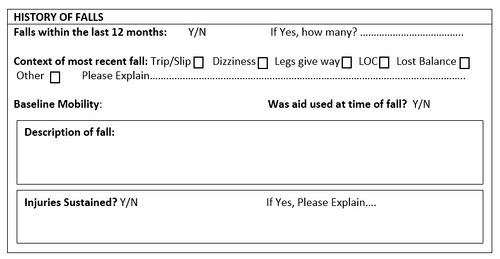The 15-Second Trick For Dementia Fall Risk
Table of ContentsThe Best Strategy To Use For Dementia Fall RiskThe Best Guide To Dementia Fall RiskThe 8-Minute Rule for Dementia Fall RiskDementia Fall Risk for BeginnersThe Ultimate Guide To Dementia Fall Risk
In the community, insufficient street lighting or unprotected creeks and landfills may also create crashes. Falls Danger Analysis Tool (FRAT) is a 4-item falls-risk screening tool for sub-acute and property care. The FRAT has three sections: drop danger standing, threat factor checklist, and action plan. A Fall Risk Status consists of information concerning background of recent drops, medicines, psychological and cognitive status of the individual.If the person scores on a danger variable, the equivalent number of factors are counted to the client's loss risk rating in package to the far appropriate. If a patient's loss danger rating amounts to 5 or higher, the individual is at high risk for drops. If the individual scores just four points or lower, they are still at some threat of dropping, and the registered nurse should use their best clinical analysis to take care of all loss threat variables as part of a holistic care plan.
These basic approaches, in basic, help develop a secure environment that lowers unexpected falls and defines core preventative measures for all clients. Signs are important for patients at threat for drops.
6 Simple Techniques For Dementia Fall Risk
Wristbands ought to consist of the person's last and first name, day of birth, and NHS number in the UK. Details ought to be printed/written in black versus a white background. Only red color should be utilized to signal unique client status. These suggestions follow present advancements in patient identification (Sevdalis et al., 2009).
Items that are also far may need the individual to connect or ambulate unnecessarily and can possibly be a danger or add to drops. Aids stop the individual from heading out of bed without any kind of aid. Nurses react to fallers' telephone call lights faster than they do to lights started by non-fallers.
Aesthetic impairment can significantly cause drops. Maintaining the beds closer to the floor reduces the danger of drops and serious injury. Placing the cushion on the flooring significantly lowers fall threat in some health care settings.
Our Dementia Fall Risk Statements
Patients who are high and with weak leg muscle mass who try to remain on the bed from a standing setting are likely to drop onto the bed due to the fact that it's too low for them to decrease themselves securely. If a high client attempts to get up from a low bed without support, the patient is most likely to drop back down onto the bed or miss out on the bed and fall onto the floor.
They're made to promote prompt rescue, not to stop falls from bed. Distinct alarm systems can likewise advise the person not to stand up alone. The usage of alarm systems can also be an alternative to physical restraints. Besides bed alarm systems, enhanced supervision for risky clients also might help avoid falls.

People with an evasion stride rise loss possibilities drastically. To lower fall threat, footwear must be with a little to no heel, slim soles with slip-resistant step, and support the ankles.
Rumored Buzz on Dementia Fall Risk
In a research study, homes with ample illumination report less falls (Ramulu et al., 2021). Enhancement in lighting at home may lower fall prices in older adults.

Sitters are effective for ensuring a secure, safeguarded, and safe setting. Nonetheless, researches demonstrated very low-certainty proof that sitters reduce loss danger in intense treatment healthcare facilities and only moderate-certainty that choices like video read review clip monitoring can lower sitter usage without boosting fall threat, suggesting that sitters are not as valuable as at first believed (Greely et al., 2020).
Not known Facts About Dementia Fall Risk

Increased physical conditioning minimizes the threat for falls and restricts injury that is received when fall transpires. Land and water-based exercise programs may be likewise beneficial on balance and gait and consequently minimize the threat for drops. Water workout may contribute a positive benefit on balance and gait for ladies 65 years and older.
Chair Increase Workout is a straightforward sit-to-stand exercise that helps strengthen the muscles in the thighs and buttocks and enhances wheelchair and freedom. The objective is to do Chair Surge workouts without making use of hands as the client becomes stronger. See resources section for an in-depth guideline on how to perform Chair Increase workout.